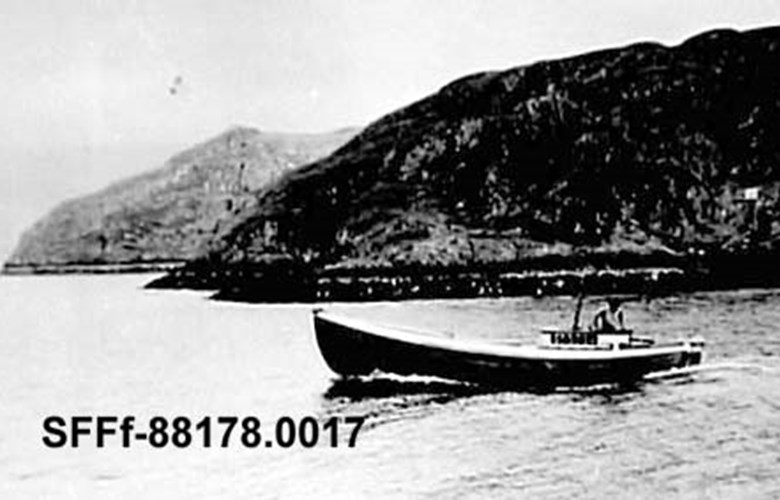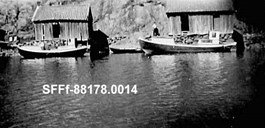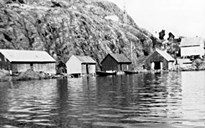With bamboo rods and bacon rind
Equipped with bamboo rods in the boat and bacon rind in their mouths, people had from time immemorial rowed and sailed out to the skerries and sunken rocks in early evening. A "påte" rod - the first ones in wood, later in bamboo - was 5-6 metres long, depending on the size of the boat. The line had the same length as the rod, made of cotton with a 1.5-metre-long wire (brass) toward the end, where there was a hook that they fastened the bacon rind on to. The bacon rind, which they had chewed white and soft, was cut in strips of 2-3 inches, pointed toward the end. With time, rubber worm, "svivel", and even strong nylon replaced the cotton line. Pulling in fish with bamboo rods was quick work.
The good life was a 24-footer with a Saab engine
From the 1920s onwards, open motor boats became more common in this fishery. He has gone "påtar", they said, or out at "påten". The fishing gear itself was a reasonable investment, but it was a financial strain to buy a new motor boat. In 1935, a new, open 24-footer cost NOK 425. Fully equipped with a 5HP Saab engine, a fish tank, and a poop above the engine, it added up to around NOK 1500. Exactly this boat size with a Saab engine was popular. And they went to the shopkeeper at Indrøy to buy six bamboo rods. At Oddekalven alone, there were at this time five boats of different sizes in operation.
Live fish in the well
The hardest workers were three in a boat. In the stern, with the tiller in his hand, stood the "skipper". He had to be vigilant, watch the engine, the speed, the waves, and of course, avoid the disgrace of colliding with other boats, even if some of them refused to yield an inch! He also administered two rods, trailing behind the boat, put in the stem, one on each side. They fished with two rods each and were actually sitting on the ends of the rods. Between two crosswise bulkheads, there was seawater, circulating in and out through solid brass valves made by the Lågøy boat yard. The fish was thrown into the fish tank alive as soon as it was caught. When they returned, they moved the catch into a purse seine in the water.
Best bite in the evening and early morning
"Påte" fish for their own personal use and for pot bait could be done in several places. But fishing for sale could be done only near the westernmost skerries and sunken rocks. There was the best fishing, and the young coalfish was bigger and so fetched a better price.
The season lasted from early summer and into the autumn. At seven in the morning, a whole fleet could be on its way out to the fishing grounds. Around midsummer, the fish would bite all night. When the nights grew darker, it stopped biting around midnight. The men then dropped anchor behind an islet, ate a welcome slice of bread, curled around the engine, and tried to keep warm until the crack of dawn.
Fish tank vessels transported fish to Bergen
This fishery took place in the summer, and the fishermen were west of all land. Yet only a light wind would make dangerous waves in the currents. Many a time they did not return ashore.
Several speculators from Bergen arrived regularly with fish tank vessels and picked up the fish. For the most trifling reason, they would declassify the catch. The fishermen had to accept what they were paid, but often clenched fists were hammered into the wheelhouse wall. When the speculator returned, there were no hard feelings.
As so much, this is history in poor light. But the one who looks may still find a bamboo rod in the boathouse attic.




